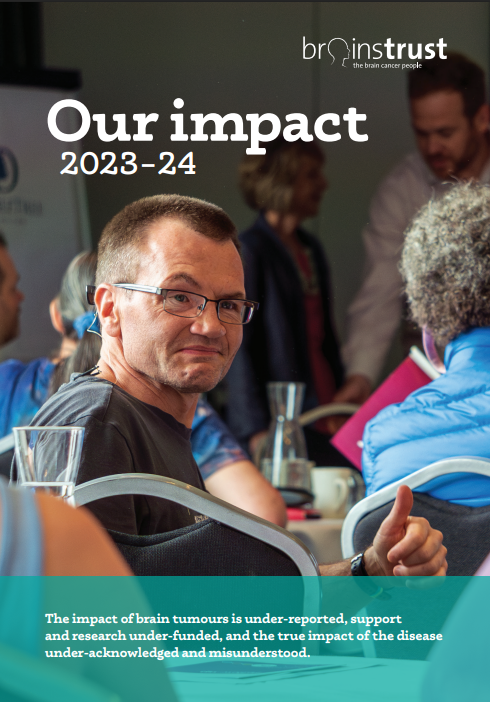This is a story all about making making sure brainstrust’s support reaches more people, and ensuring more top-notch brain tumour research happens. Must say we’re excited about this and pleased that we can finally share the exciting announcement with you. Here goes…
Working together: more research and more support.
brainstrust and the Samantha Dickson Brain Tumour Trust (SDBTT) have announced today that they are launching a new collaboration to help brain tumour patients, carers, clinicians and researchers.
The two charities, will work in partnership on certain projects to increase brain tumour research output and to accelerate the delivery of innovative brain tumour support services on a national level.
This new collaborative approach has been designed by brainstrust and SDBTT to better meet the needs of beneficiaries while also ensuring that the distinct work the two organisations undertake remains a clear priority.
Already agreed is a programme of social meet-ups and information days for the brain tumour community and a commitment to direct fundraising efforts towards Association of Medical Research Charities (AMRC) approved projects that are currently underway with SDBTT.
Also on the collaboration agenda is the cross-promotion of all sources of brain tumour support and advice by both charities which will give an increased sense of guidance to visitors to both websites and all callers.
Practical & personal emotional and social support for more people
“From now on, the two charities will be working alongside each other but will remain as two separate entities. SDBTT will focus on brain tumour research and information, and brainstrust on growing the reach of its acclaimed brain tumour support service. This focus will allow each organisation to really excel at what they’re good at.” – Will Jones, brainstrust
At brainstrust we’re known for our very practical emotional and social support for brain tumour patients and their carers. We’ve supported thousands of people since we set out in 2006, and our main aim has always been to offer support and guidance from the point of diagnosis, and beyond, offering pragmatic, useful advice that will best help those that call. This service is provided through a unique and effective professionally accredited, personalised coaching model. And it works really well. In working with SDBTT we will be able to reach and really support many more brain tumour patients and carers. And with our shiny track record and enthusiasm, we can’t wait to take on the challenge.
SDBTT prides itself on providing information to those affected and has a commitment to top quality medical research. Its annual brain tumour research budget is now in excess of £1 million and is allocated through a rigorous, internationally recognised peer review process. The organisation is also making a significant impact with its Headsmart campaign which calls for earlier diagnosis of children with brain tumours. It makes a lot of sense for us to support SDBTT research projects because of their effectiveness to date, and also the rigorous peer review process. This means that we can be confident that every research penny we raise is spent in the best possible way.
From now on we will work together to achieve our goals in these areas. An approach supported by the Charities’ Commission who recently published research that shows that charities that collaborate are able to offer an improved service, can increase the reach of their services and can have a greater impact.
In short? Each organisation will be even more efficient, even more effective, and we will each be well placed to continue to grow.
A word from our Chair of Trustees
Philip Cuff, Chair of Trustees here at brainstrust is very clear on what this collaboration is going to provide,
“Action! This is an agreement of substance rooted in several shared commitments including a carers’ day on 17th October, a programme of cross-promotion for helplines and sources of information, patient information days and an even greater programme of Meet Ups. Ultimately this is about offering everyone that needs it the best, most up-to-date support and with the weight of two organisations behind it, this new relationship will do just that. We are thrilled to be working alongside our colleagues at SDBTT and look forward to continuing to make a difference in the lives of those affected by brain tumours.” – Philip Cuff, brainstrust.
Find out more
We’ve a lot planned over the coming months. As Philip says, this is an agreement of substance, so the detail had to come first. We’ve Meet Ups, Information Days, new literature, Carer Days and much much more planned. To find out more, or to support us in this new collaboration simply call us on 01983 292 405 or email hello@brainstrust.org.uk
To find our more about the Samantha Dickson Brain Tumour Trust, visit www.braintumourtrust.co.uk







